Cook smoked Grilled Brisket low-and-slow on your backyard gas grill—moist and tender meat with crusty bark and a smokey taste. Make classic BBQ brisket without a smoker.
The fantastic bark with the smoke and tender meat will make this your favorite meat.
🐄Ingredients
Brisket—the size of your choice, but I generally cook a 4-5 pound point or flat.
Dry Rub—brown sugar, paprika, kosher salt, black pepper OR dry rub of your choice
Wood chips for smoke
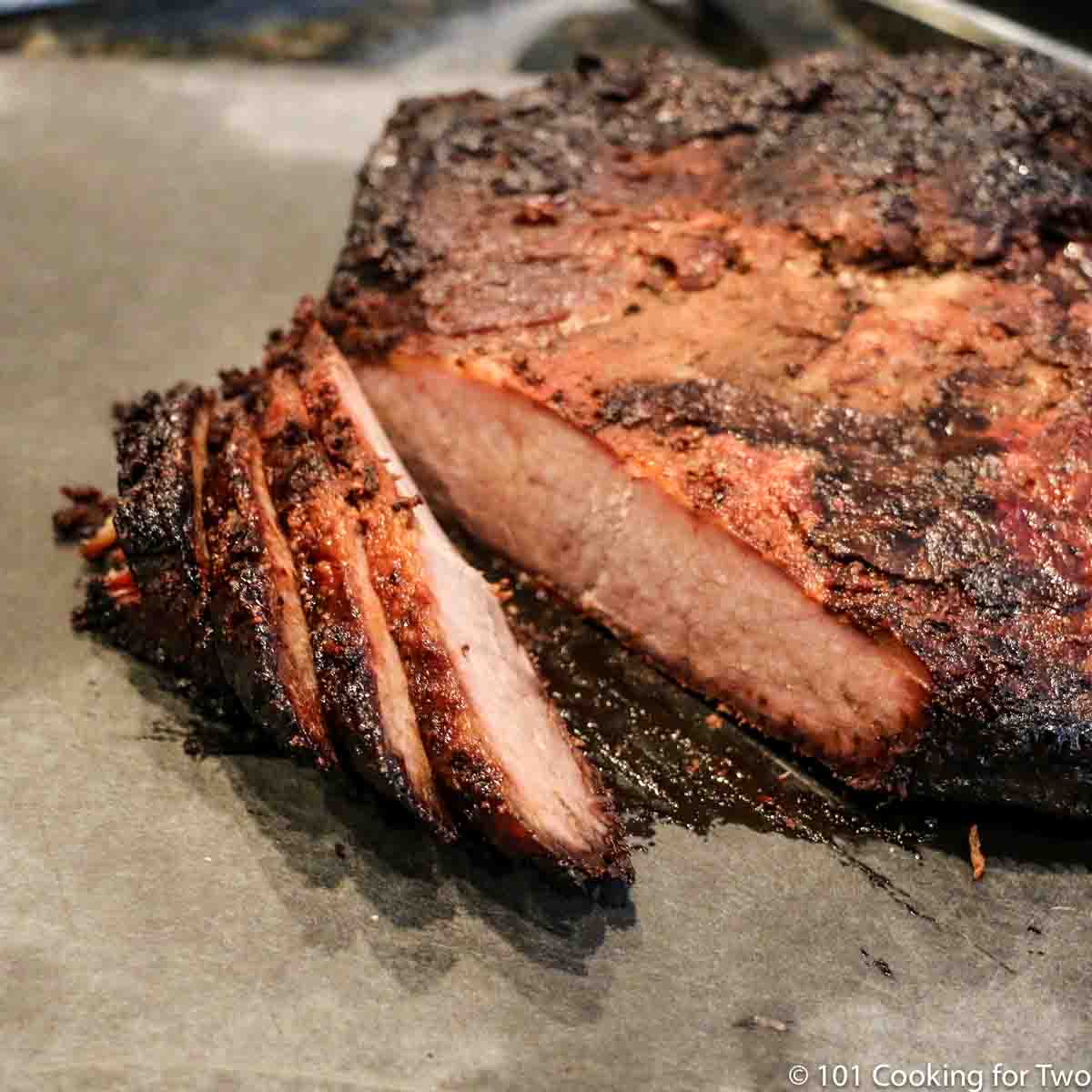
TABLE OF CONTENTS
- 🐄Ingredients
- 👨🍳How to Cook Brisket on a Gas Grill—Step-by-Step Photo Instructions
- ⏰How Long to Grill a Brisket
- 🌡️When is Brisket Done?
- 🌡️What Grill Temperature to Use
- 📚Reference posts for more information
- ✔️Tips to get it right every time
- What is "The Stall"?
- The Texas Crutch
- ❄️Storage and reheating leftovers
- ✔️FAQs
- Classic Grill Recipes
- 🐄About Brisket
- 📖 Recipe

Featured Comment from Matt :
"Thanks, this technique and explanation is fantastic! Haven't done it for a few years and these instructions are great."
⭐⭐⭐⭐⭐
BBQ brisket is the king of all barbecues. You can argue for pulled pork butt or baby back rubs, but it is smoked brisket for me. This brisket recipe provides what you need to make great brisket on your home gas grill. But you can use a charcoal or pellet grill.
Once you have your grill set up for low-and-slow cooking and smoking, it is easy to grill and smoke brisket on your gas grill with the easy step-by-step photo instructions.
👨🍳How to Cook Brisket on a Gas Grill—Step-by-Step Photo Instructions
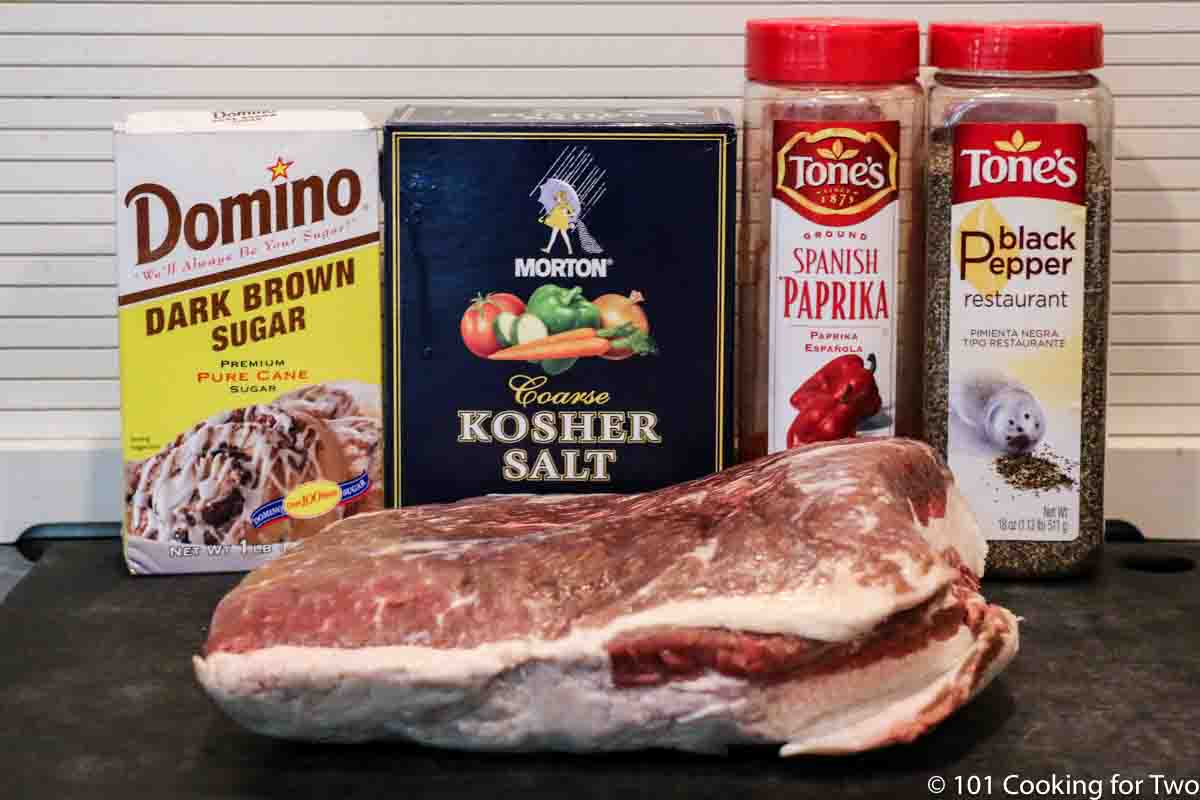
1. Use a half or whole brisket and rub of your choice.
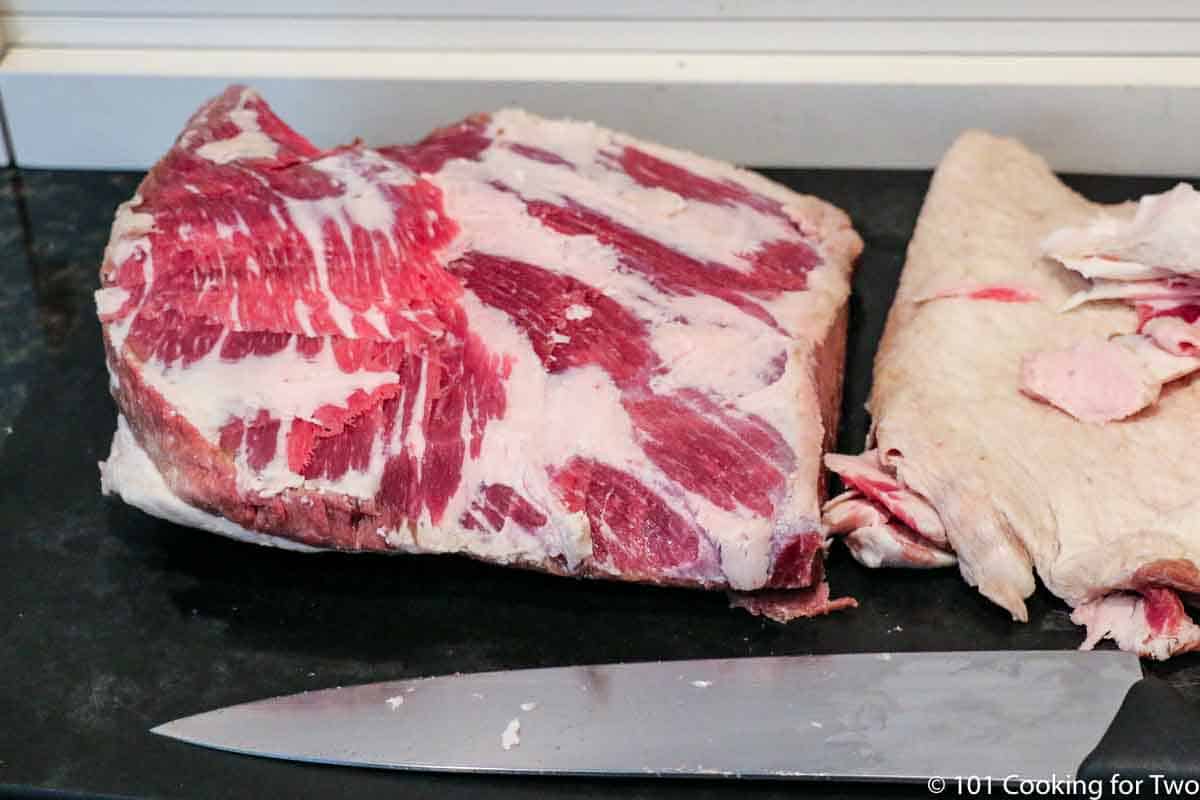
2. Optional: Trim brisket of large chunks of fat and the fat cap.
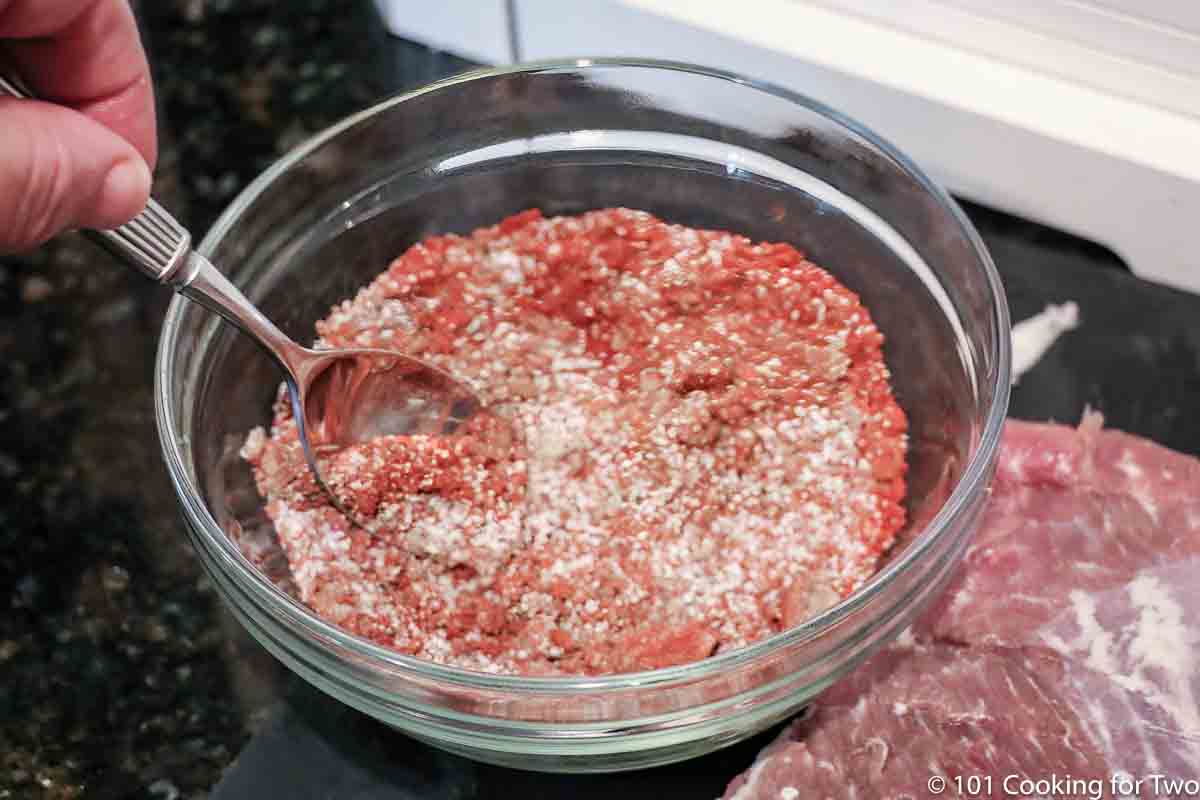
3. Use the rub of your choice, or you may use mine.
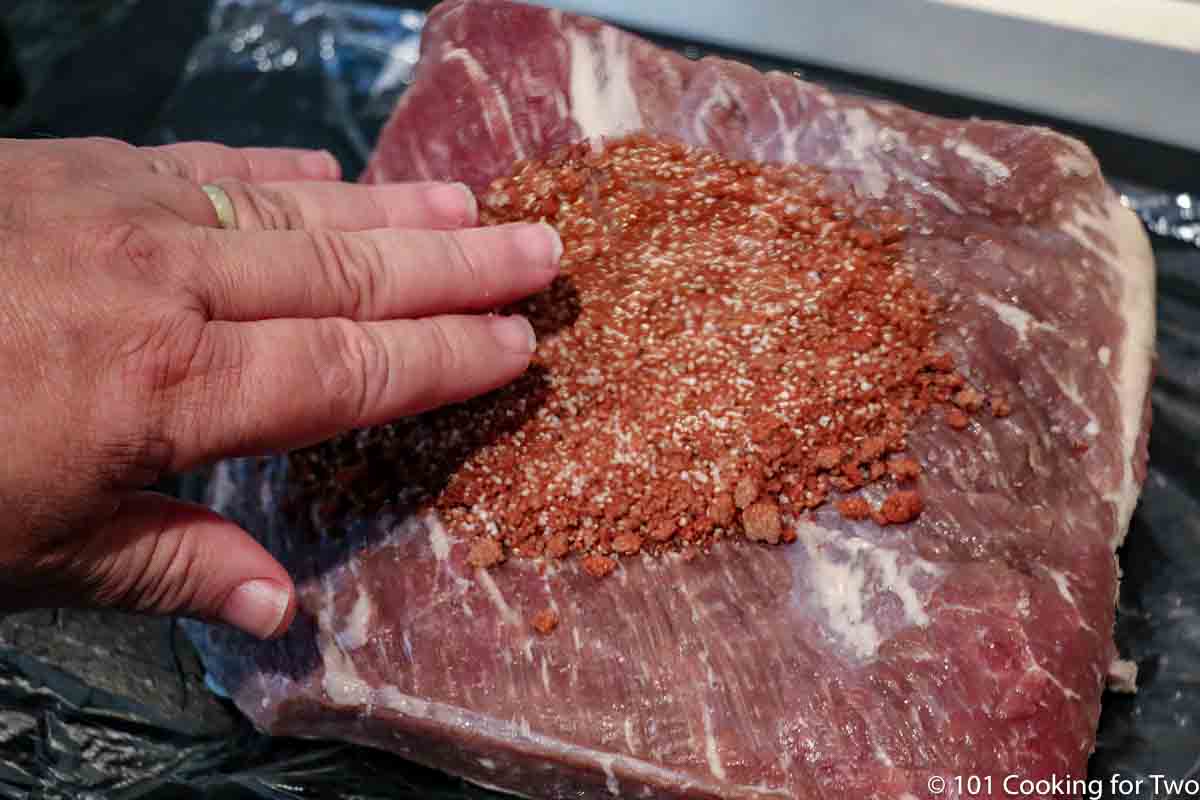
4. Give all sides of the brisket a heavy coat of rub.
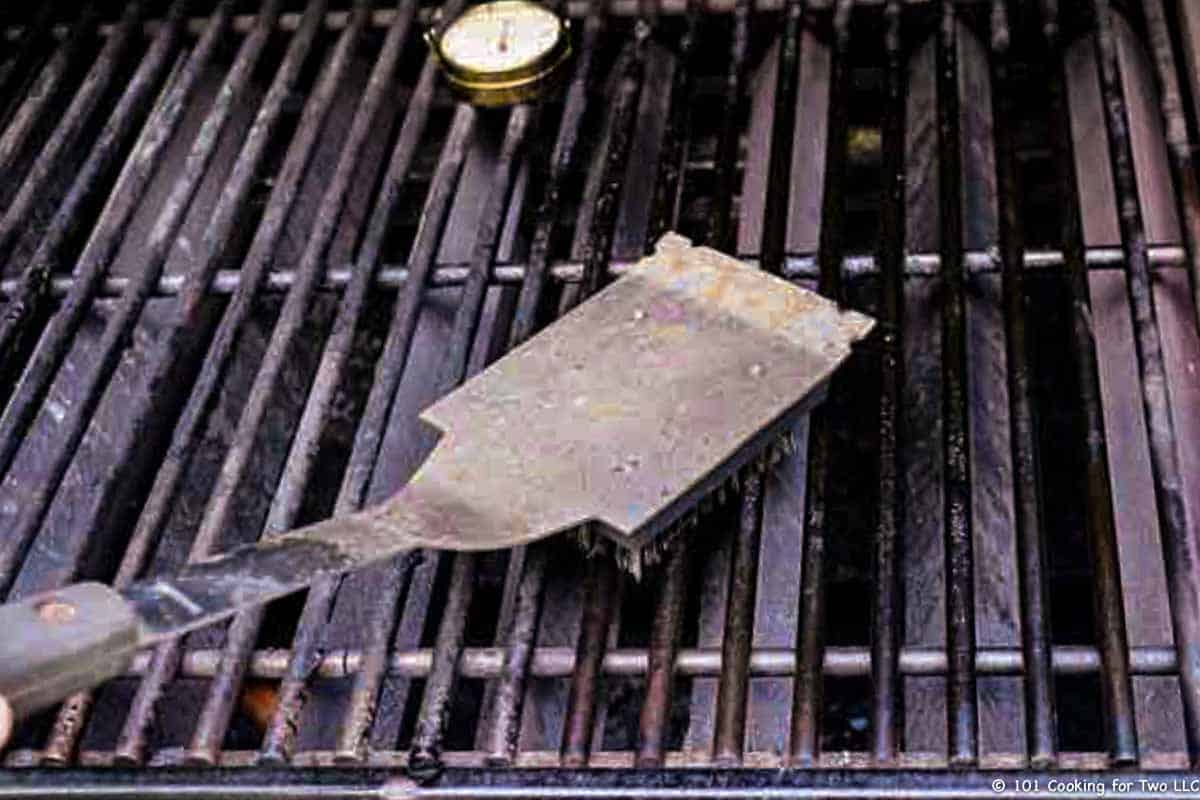
5. Set up the grill for a steady temperature of about 225°-250° with indirect heat, a drip pan on the indirect side, and a way to create smoke.
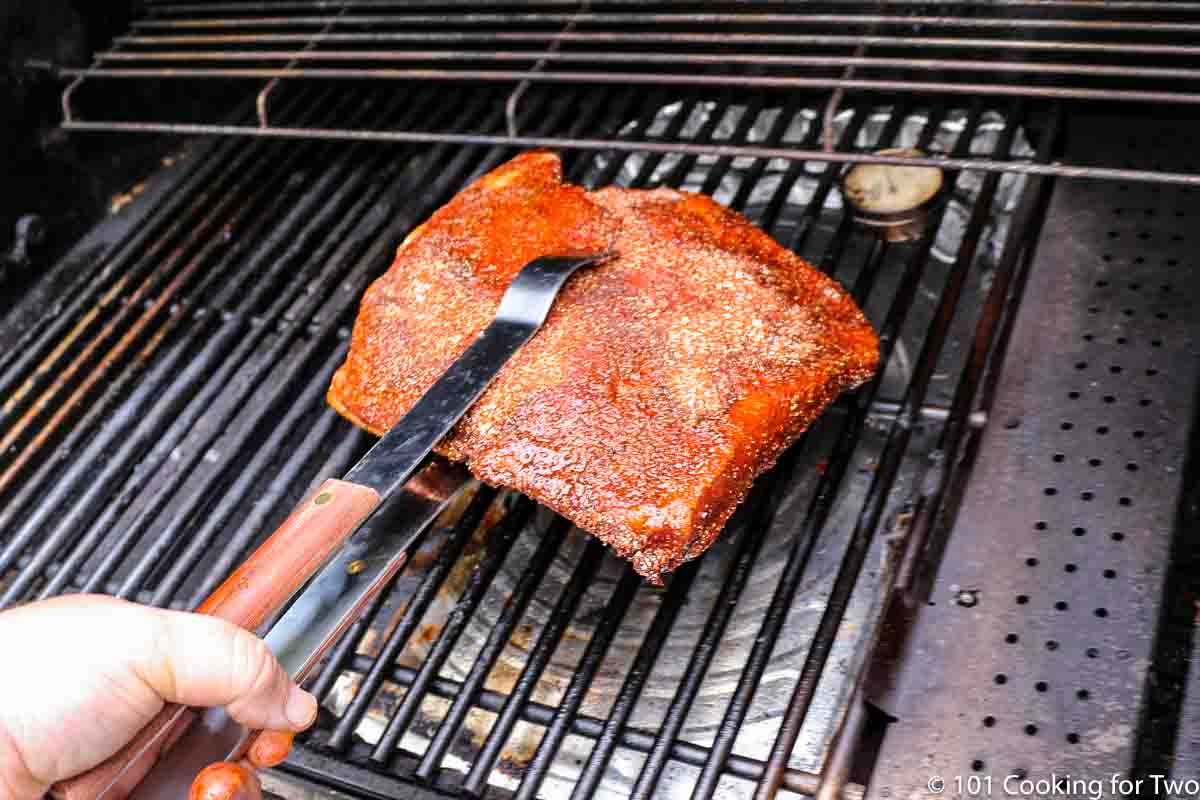
6. Cook on the indirect side over a drip pan.
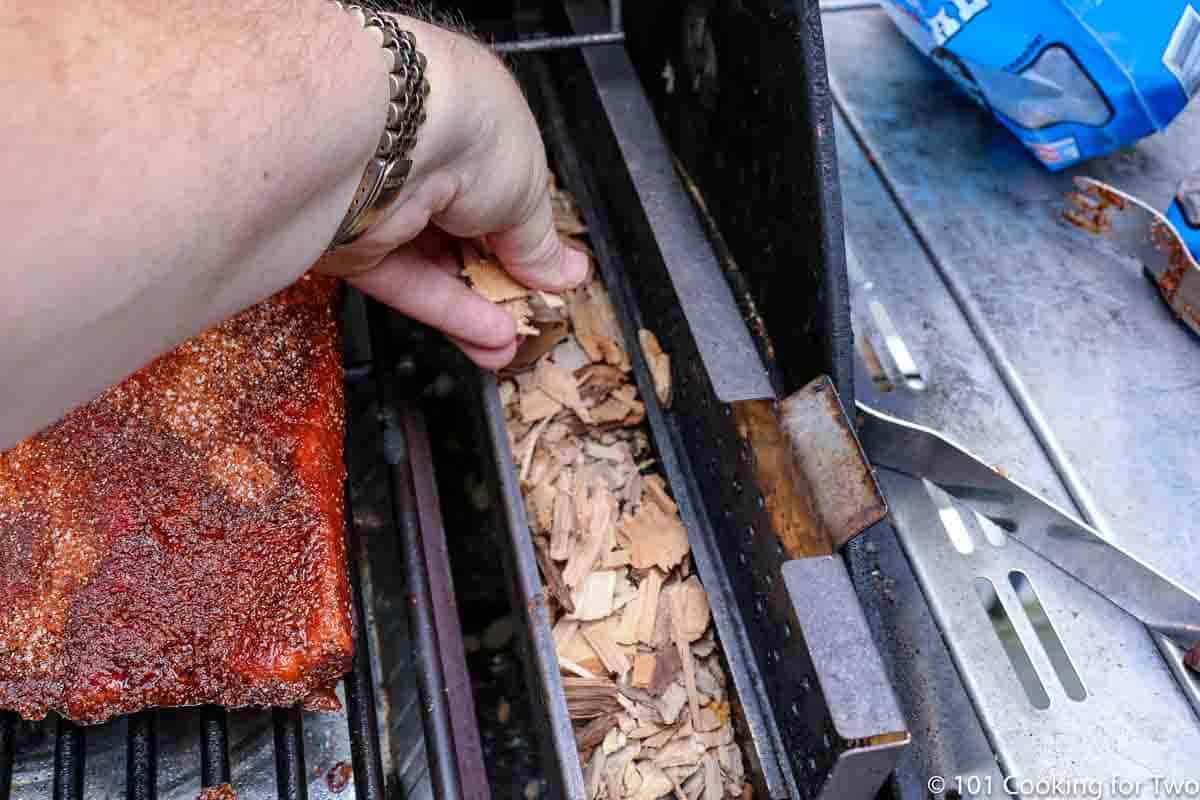
7. Add smoke.
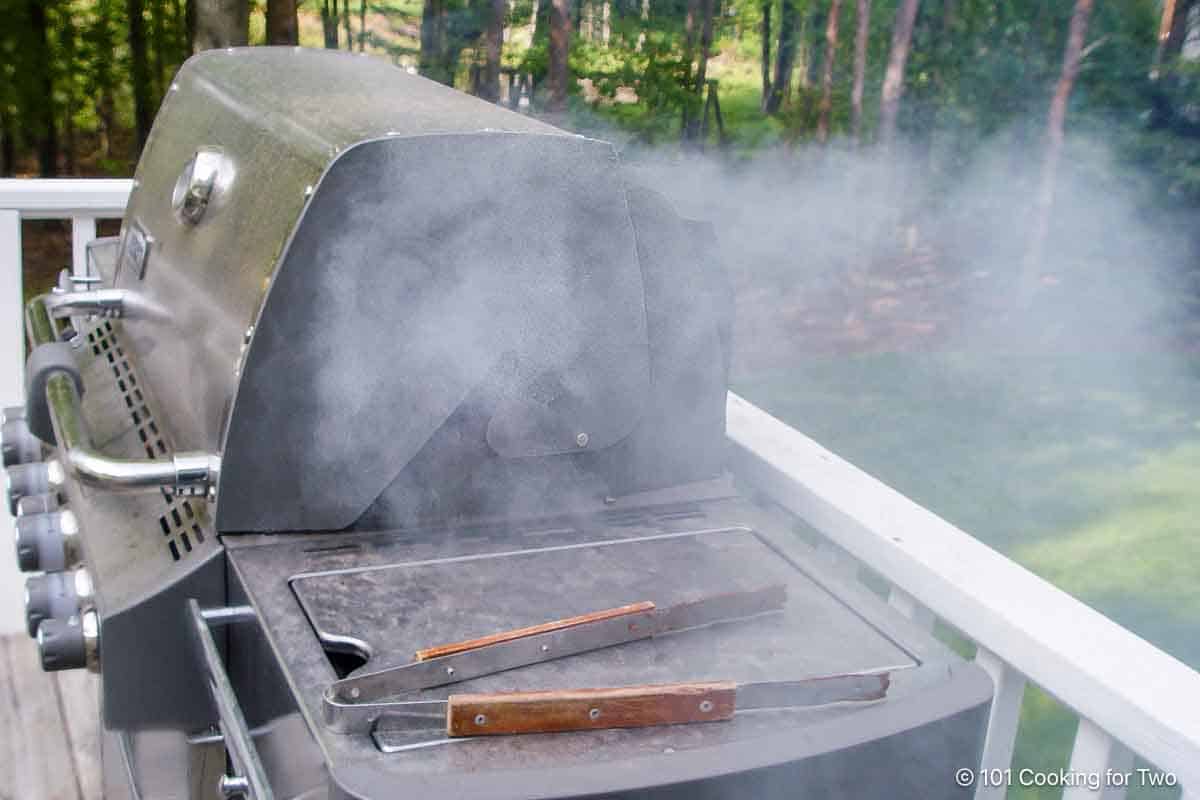
8. Cook until an internal temp of 200°-205°, about 5-6 hours total cooking time with the 5-pound point.
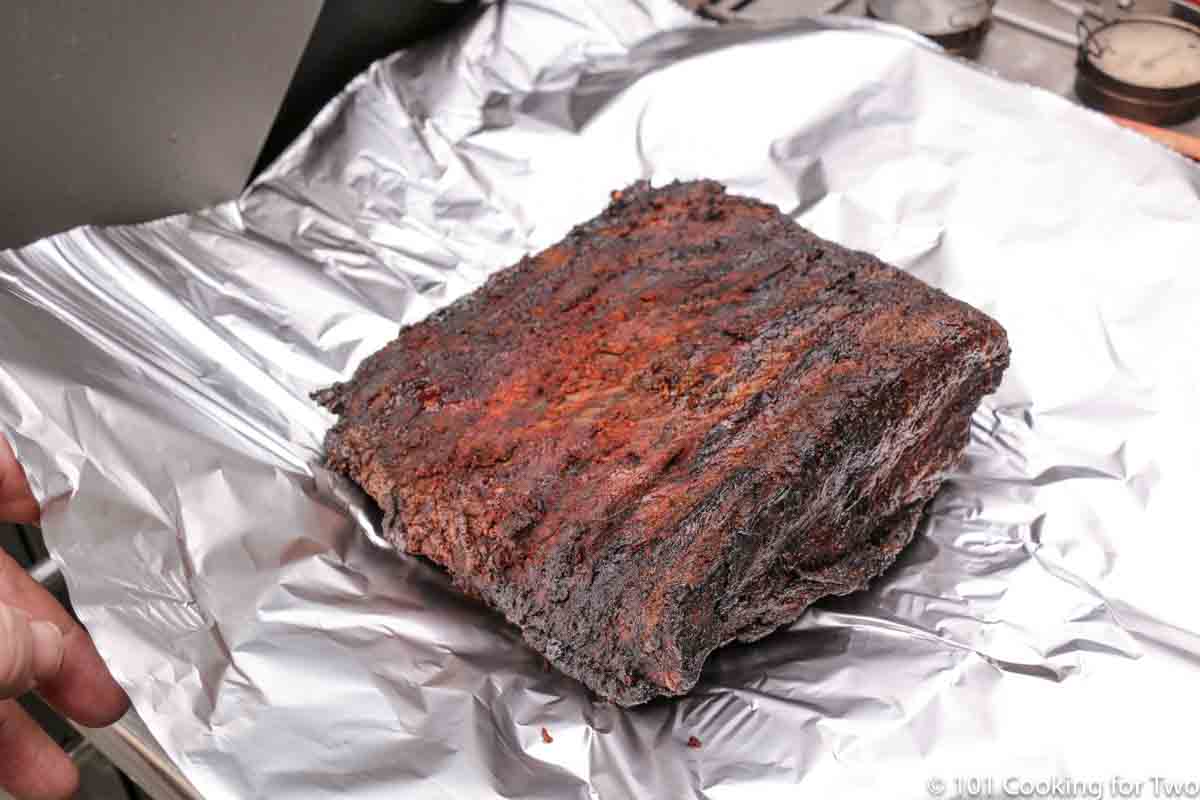
9. Remove from the grill and wrap in foil and a couple of towels.

10. Allow to rest for 1-2 hours before cutting thin across the grain to serve.
For more details, keep reading. See the Recipe Card below for complete instructions and to print.
⏰How Long to Grill a Brisket
Most will say 1 to 1 ½ hours per pound, assuming a 250° grill. It is not a bad starting point for time management, but a wide range. The significant variables are weight, thickness, and grill temperature.
🌡️When is Brisket Done?
Brisket is done when the internal temperature reaches 200°F-205°F. I think 190°F is too low. 195°F-200°F will slice nicely. But 203° seems to be the number competition smokers want. 205°-210° is ok. But over 210° is probably too much and will become a texture and moisture issue.
🌡️What Grill Temperature to Use
Try to use a stable grill surface temperature of 250° in the indirect heat area. Most smokers will use 225°. As you get to 300°, you will get more dryness issues.
You must have a good grill surface thermometer to do this correctly. A continuous read probe meat thermometer is a good idea, along with the required surface thermometer.
These are products I own and use. All product links are affiliate links—see the Privacy Policy for more information.
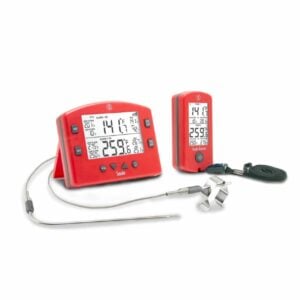
Smoke™ by Thermoworks™
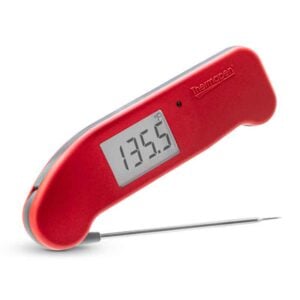
Thermapen™ One from Thermoworks™
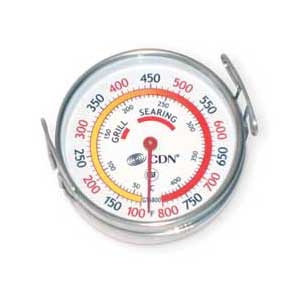
CDN Grill Surface Thermometer
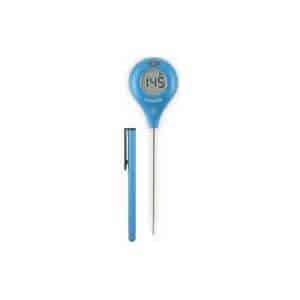
Thermopop™ by Thermoworks™
📚Reference posts for more information
- How To Set Up Your Gas Grill for Smoking and Low and Slow Cooking
- A Beginners Guide to Grill Temperature on a Gas Grill
- BBQ Dry Rub
- Memphis BBQ Sauce—Sweet and Tangy
Easiest Oven Baked BBQ Beef Brisket
Learn how simple it is to make smoky and tender oven-baked BBQ Beef Brisket with this never-fake brisket recipe—just two ingredients and 5 minutes of prep time—everybody deserves great BBQ.
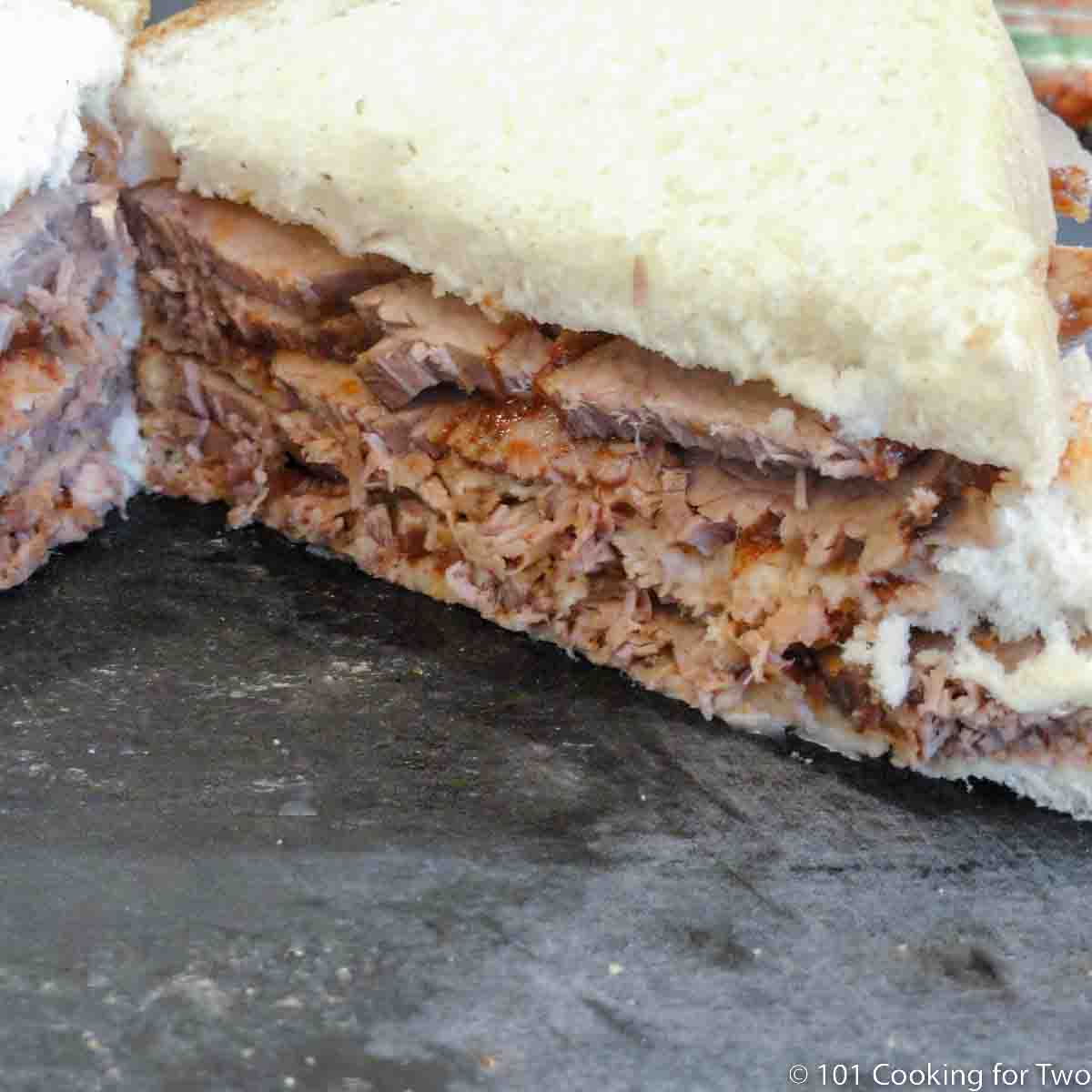
✔️Tips to get it right every time
- Use the grill you have, but it needs to be big enough for the meat and the cooking technique.
- You can use a charcoal or pellet grill if you can control the temperature.
- Be sure to have enough fuel to complete the cooking—an extra tank of propane, an extra bag of wood pellets, or charcoal. I use a natural gas grill.
- This recipe only has the most basic dry rub, but it works and is delicious. But for a more complicated flavor profile, check out my full BBQ Dry Rub with infinite options.
- Fat side up or fat side down is hotly debated, but it does not matter. The moisture is from the melted connective tissue and not the fat. My friendly competition smokers agree. It does not matter. I prefer to trim some to decrease the mess and increase the surface area for great bark.
What is "The Stall"?
“The Stall” happens when the fibers of the meat contract nearing 150°F to 160°F. This occurs with both beef and pork and continues to about 180°F when the meat fibers start to relax.
Since it occurs past "well done" temperature for most meats, it is not an issue for steaks, pork chops, or similar cooking. But with brisket or pork butt, where we are cooking to the 200° plus range, you may want to consider this issue.
The water in the meat fibers will be forced out of the cells as they contract and will make their way to the surface. On the surface, the water will evaporate as cooking continues. Evaporation uses energy and will “stall” the cooking process.
This stall can go on for hours, depending on the size of the meat and other factors. Six hours sometimes for a large whole brisket.
The Texas Crutch
The "Texas Crutch" is used to counter “the stall.” It is tightly wrapping the meat to prevent evaporation. 90% of competition smokers do this. But remember, they are cooking large whole briskets.
By tightly wrapping, you are creating a “mini-environment” next to the meat, which will quickly reach 100% relative humidity and prevent further evaporation.
While the meat fiber will continue to contract and force out water, it can not evaporate, cooling your meat and prolonging the cooking time.
Pros and Cons of “The Texas Crunch”
Pros
- The biggest pro is time. You can save hours in cooking time, especially with larger cuts.
- Moisture. It can help maintain moisture in the meat. As the beef passes the 180° range and the cells relax, the moisture can re-absorb into the cells. This is not a huge effect.
- If on a smoker, you can also control smoke exposure.
Cons
- The main con is water can destroy your bark. Your hard-earned crunchy bark becomes soft. You can counter this some (not completely). See the next section.
- The fussiness and a bit of work. Yep, some people complain about anything.
- Your grill temp goes down. I work hard to keep my temperature stable. I try to keep my hands off and the hood closed as much as possible.
The Technique of the Texas Crunch
While some will use butcher paper (the pink butcher paper, not the white wax-coated stuff), I don’t want to buy hundreds of feet of it. It may be a bit better on the bark issue. Most people use heavy-duty aluminum foil since we all have that.
- You will want to do this in the 150°-160° range when the meat temperature “stalls.” Also, the bark should be dark red approaching black and “set up,” meaning not mushy looking.
- Get an area close to the grill and get two large pieces of foil ready to double wrap.
- Quickly grab your meat off the grill. Do not just flip the lid wide open and keep it that way. Open as far as you need and close immediately.
- Wrap tight. I will say that again, TIGHT and crimp the seams and ends. The less space in your mini-environment, the better.
- Crimp tightly around your meat thermometer. You must have a continuous read thermometer to do this right.
- Back to the grill until you reach your goal temperature, usually 200°-205° for me.
- If you want to improve your bark, unwrap at this point and cook for 30 more minutes.
Why I don’t usually do this.
- I’m cooking smaller pieces of meat—less stall. So, there's not much reason to bother with it.
- I love a good crunchy bark. If you don't care about bark, do my oven method.
- The moisture thing is not that much. A lot of that “moisture” you love is melted collagen. Collagen melting starts at 160° and increases to 180°.
❄️Storage and reheating leftovers
Store leftovers in an airtight container and refrigerate for 4 days. Or freeze for 3 months.
Reheat covered in a 300° oven until hot. While I yell and scream about using sauce to reheat pulled pork, brisket can take the abuse from the acid in the sauce, so it's your choice.
✔️FAQs
Buy ½ pound per person. For teenage boys, assume 1 to 1 ½ pounds. Plus, you want leftovers.
The anti-trimming gang says it is natural and will protect the meat.
The trimmers will argue it makes a big mess and that it is the melting of collagen that produces most of the moisture. Also, more area for the rub to be on the meat.
A compromise is to trim the layer of fat to ¼ inch thick. This is usually what I do now, but the picture is a full trim. I'm not eating a chunk of fat just because it has the "bark" on it. But tender brisket with bark is heaven.
Injecting brisket—I don't. You can add a variety of flavors, but I don't want to do that—I want my brisket to taste like brisket, not apple juice or something else.
Is it moister with injecting? Some say yes, and some say no. If yes, then it is marginal. Research injecting carefully before doing this. Mistakes can ruin your brisket.
Brining brisket—Some people swear by it, but most competition smokers don't. I have never been a fan of brining beef. I have experimented with other cuts of beef, and I felt it took away the "beef" flavor a bit.
This is a personal taste thing. I love hickory, but mesquite, apple, cherry, and pecan are good for smoking a brisket. Oak seems to be another commonly suggested wood, but it would be my last choice.
Yes, as long as you can maintain the grill temperature correctly.
Classic Grill Recipes
Don't miss these classic grill recipes, like Smoked Pulled Pork and Baby Back Ribs on a Gas Grill. And use my wonderful Memphis Barbecue Sauce.
🐄About Brisket
Beef brisket is a cut of meat from the lower chest wall. The brisket includes superficial and deep pectoral muscles, which have lots of connective tissue. The cow does not have collar bones, so these muscles support about 60% of the body weight of the 1500-pound cow.
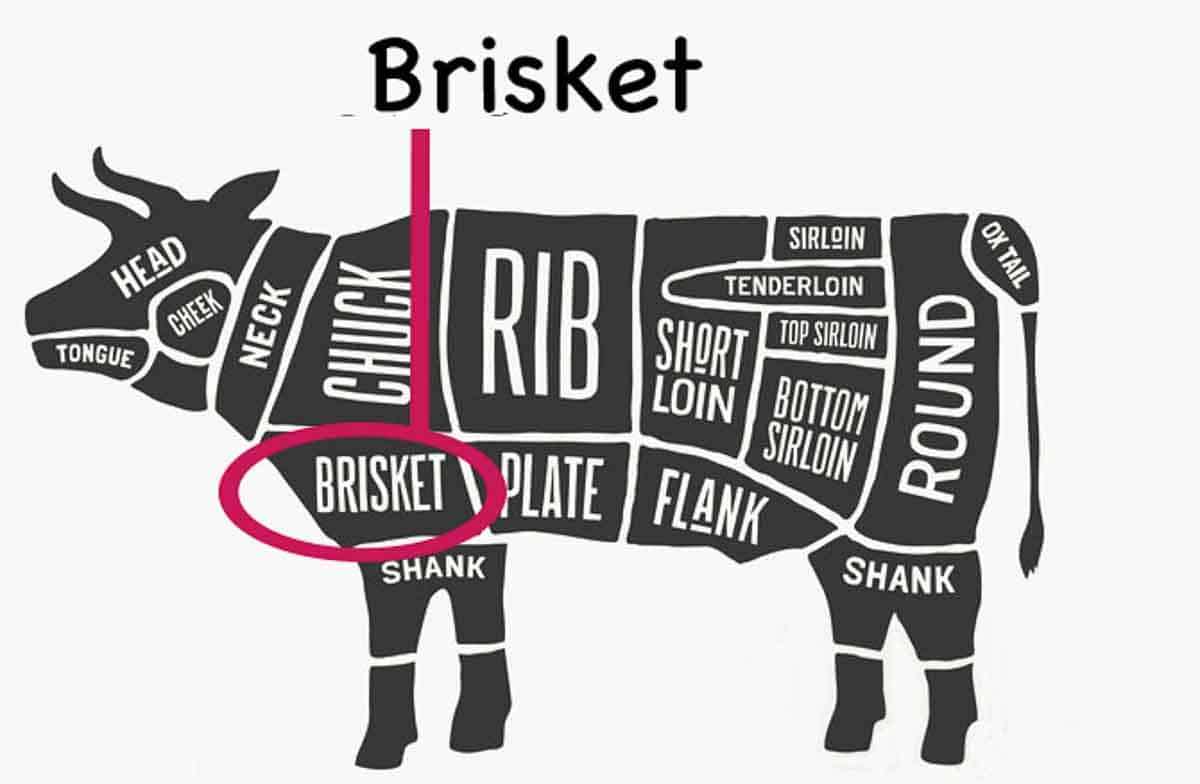
Whole briskets are generally vacuum packed for the producers and are usually 8 to 12 pounds, which is more meat than most of us “cooking for two” people want except for parties.
Many consumer meat markets and some grocery stores will sell half briskets. There are the “point” and “flat” halves. Generally, the flat half has two layers, and the point has only one muscle layer.
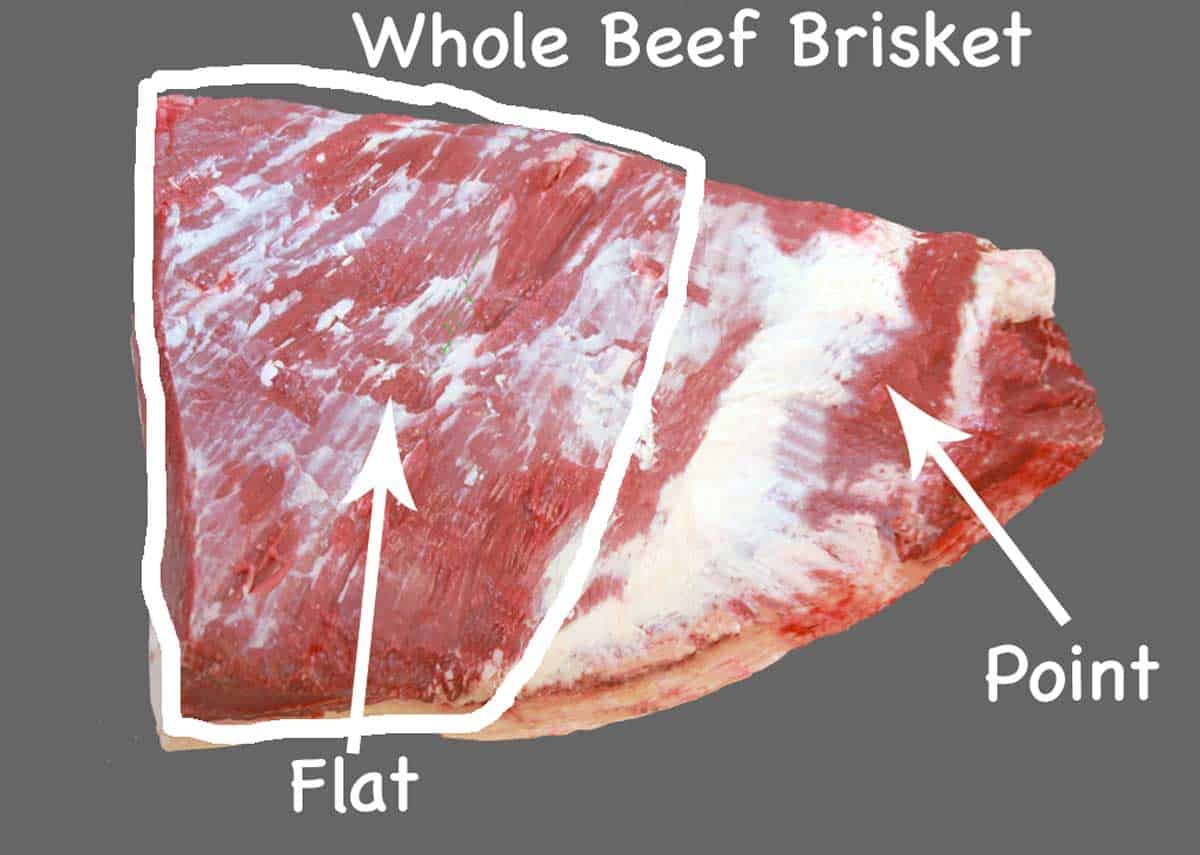

This recipe is listed in these categories. See them for more similar recipes.
Have you tried this recipe, or have a question? Join the community discussion in the comments.
📖 Recipe
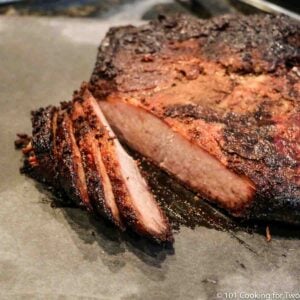
How to Cook a Brisket on a Gas Grill
Ingredients
- 5 pound Brisket - Size of your choice
My rub for a 5-pound brisket. Scale for different size. You may use the rub of your choice.
- ¼ cup brown sugar
- ¼ cup paprika
- 2 tablespoons kosher salt
- 2 tablespoons black pepper
Instructions
- Use a half or whole brisket and rub of your choice.
- Optional: Trim brisket of large chunks of fat and the fat cap. Don't try to be perfect. Some people don't trim or will leave a ¼ inch thick layer. Personal choice.
- Use the rub of your choice, or you may use mine. For my rub, mix rub of ¼ cup each of brown sugar and paprika. Add two tablespoons each of kosher salt and black pepper and mix well.
- Give all sides of the brisket a heavy coat of rub. Wrap with plastic wrap and refrigerate for a few hours or overnight if you have time, but rub and go works. Remove from refrigeration about 1 hour before cooking and allow to rest at room temperature.
- While the brisket is resting, set up the grill. You want a steady temperature of about 225°-250° with indirect heat, a drip pan on the indirect side, and a way to create smoke. See the link in the post for more information.
- Cook on the indirect side over a drip pan.
- You need a method of adding some smoke to your brisket. The method, amount, and duration are up to you. I do about 1 hour of hickory with my built-in smoke box. But foil packs or cast-iron smoker boxes work well. Set How To Set Up Your Gas Grill for Smoking and Low and Slow Cooking.
- Cook until internal temp of 200°-205°. It takes me about 5-6 hours total cooking time with the 5-pound point.
- Remove from grill and wrap in foil and a couple of towels.
- Allow to rest for 1-2 hours before cutting thin across the grain to serve. If you have a flat half or whole brisket, separating the layers before cutting is best.
Want to save this recipe for later?
Recipe Notes
Pro Tips
- The set up of the grill for low and slow cooking plus smoking is the most important part of cooking a brisket on a gas grill.
- Use the rub of your choice, but I include a suggested rub.
- I usually will do smoke for about an hour, but more is fine.
- Cooking time varies a lot, but 1-1 ½ hours per pound is a good starting point to estimate your cooking time.
- Be sure to wrap and let sit after cooking for 1-2 hours.
- You must cut across the grain.
- See the write-up about injection, brine, the stall, and the Texas crutch.
- For serving size by the person. Cook ½ pound per person but double or triple for teenage boys. And you want leftovers.
- This recipe scales up well, but a large whole brisket may take 12-16 hours, and you want to read my discussion about the Texas crutch in the main post above.
- Good in refrigerator for 3-4 days and freezer for 3-4 months.
- Please see How to Set Up a Gas Grill for Smoking and A Beginners Guide to Grill Temperature on a Gas Grill for low and slow grill setup instructions if you need help.
Your Own Private Notes
To adjust the recipe size:
You may adjust the number of servings in this recipe card under servings. This does the math for the ingredients for you. BUT it does NOT adjust the text of the instructions. So you need to do that yourself.
Nutrition Estimate
© 101 Cooking for Two, LLC. All content and photographs are copyright protected by us or our vendors. While we appreciate your sharing our recipes, please realize copying, pasting, or duplicating full recipes to any social media, website, or electronic/printed media is strictly prohibited and a violation of our copyrights.
Editor's Note: Originally Published July 28, 2014. Updated with expanded options, refreshed photos, and a table of contents to help navigation.
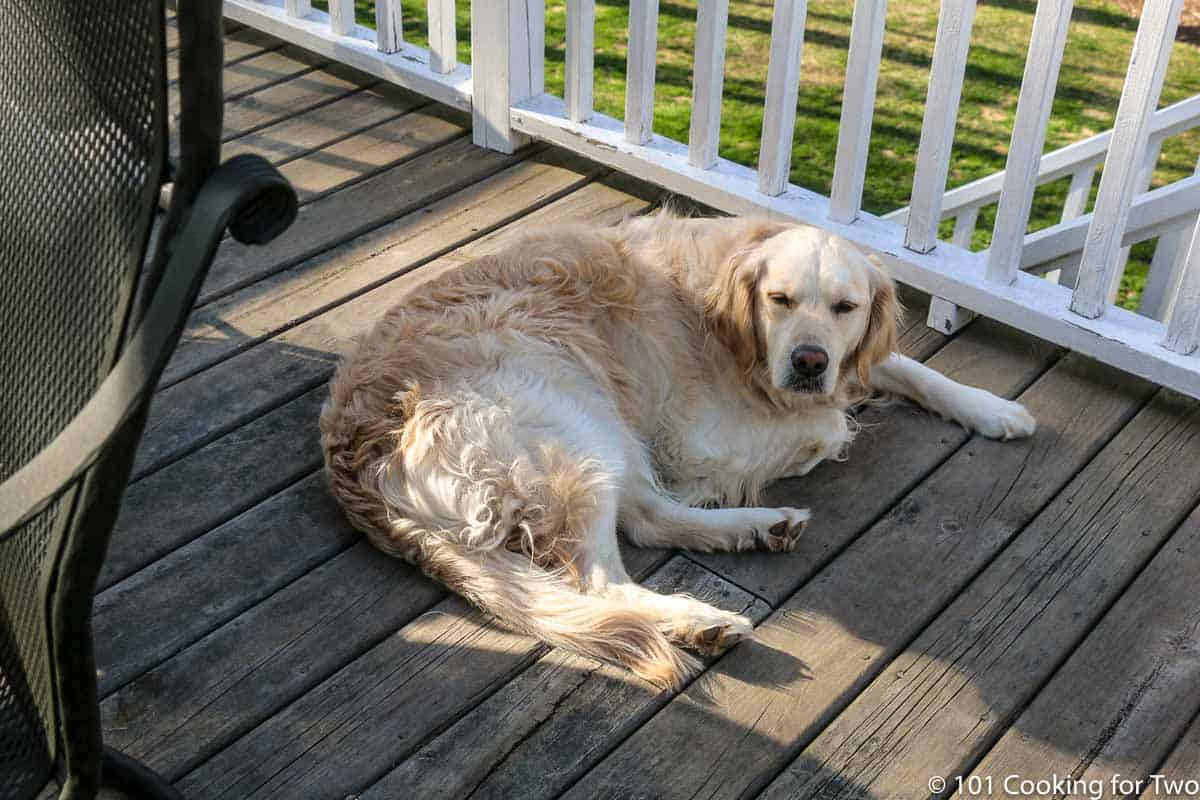


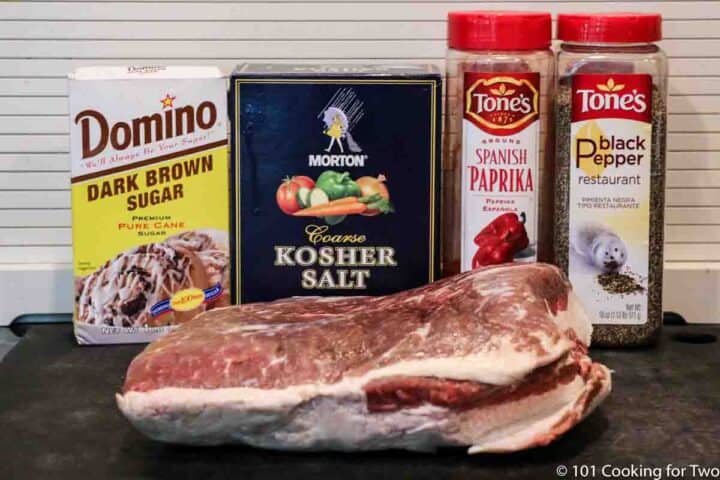
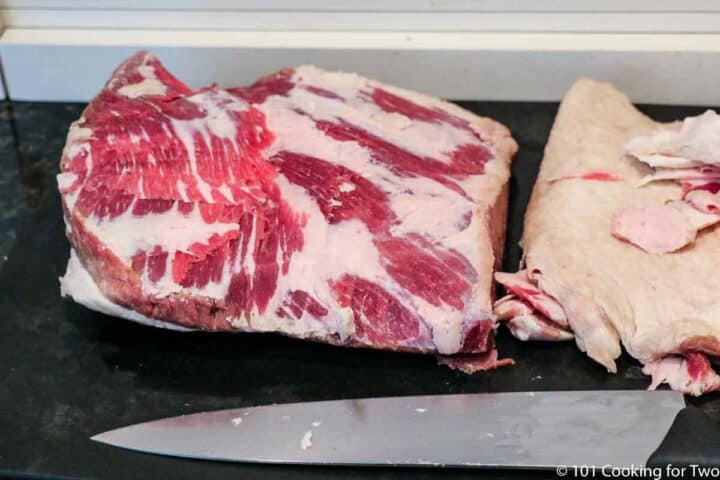
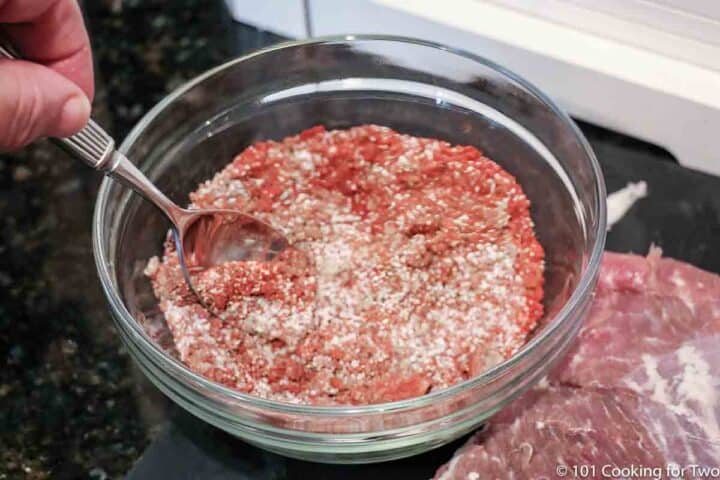
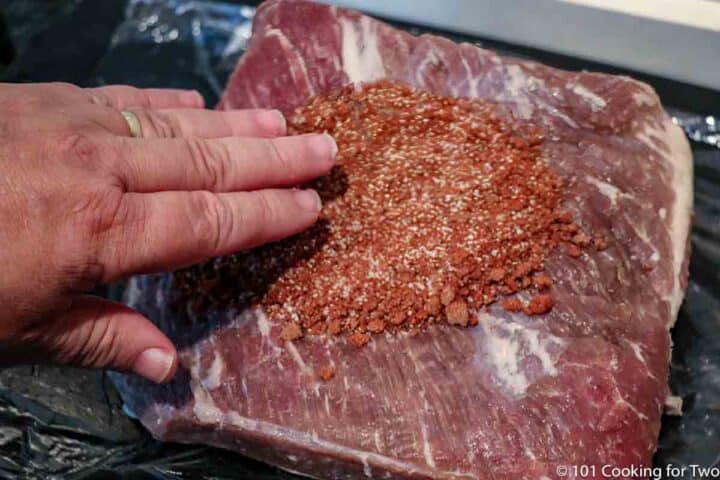
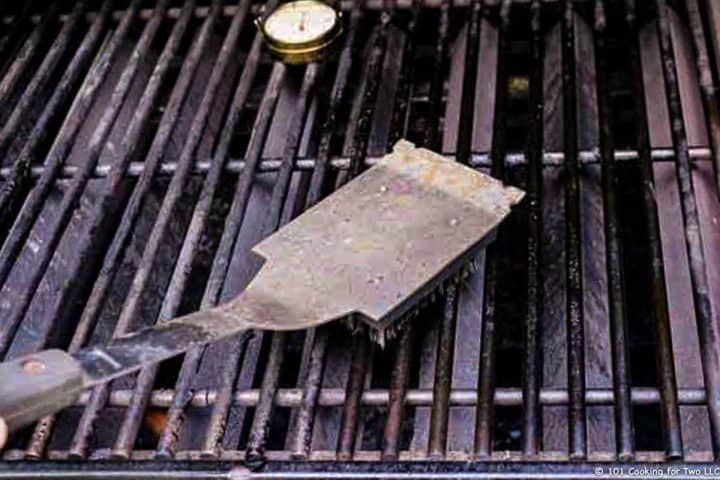
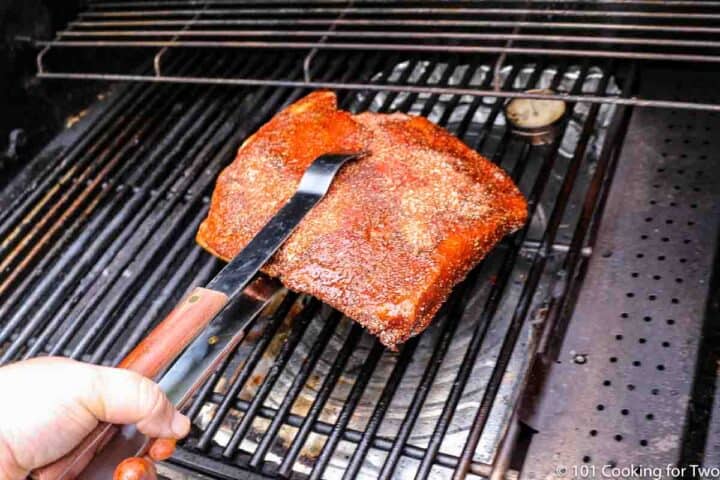
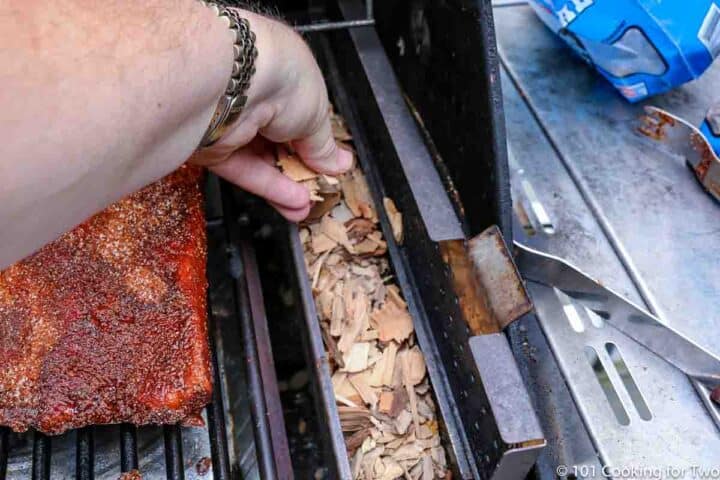
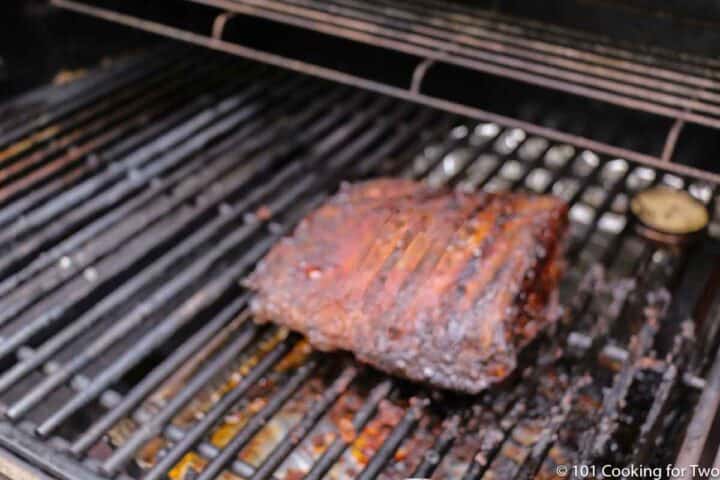
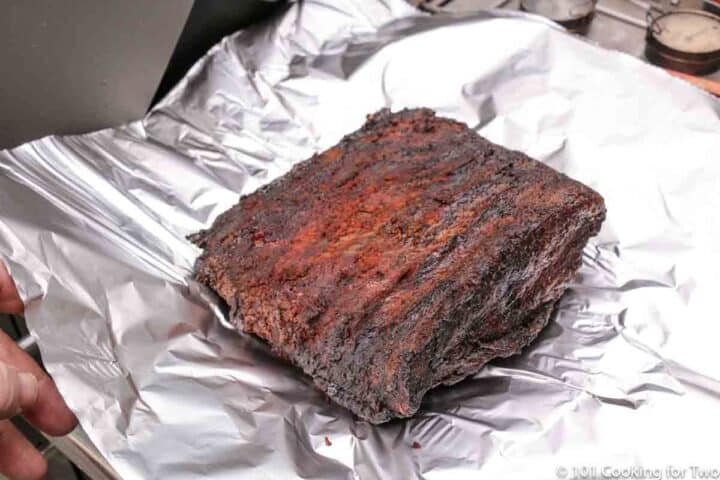
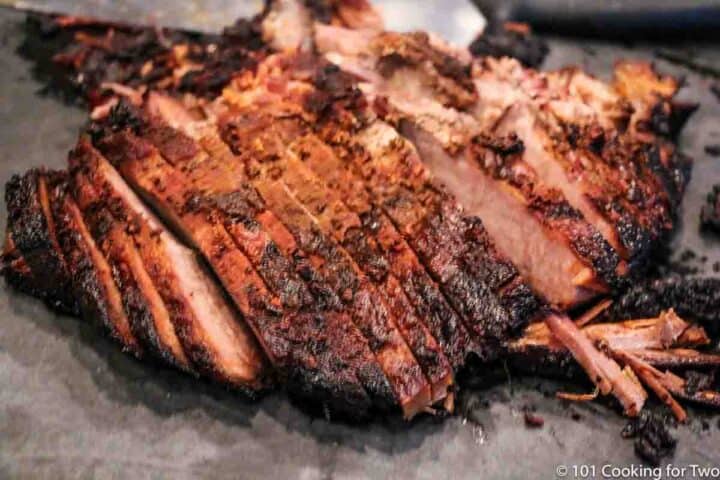
Mick McCanlies
Wow!
My wife and I moved to Portugal two years ago and have been wanting a great Brisket since we moved from Texas. This recipe is the bomb. Simple and very easy. Our biggest obstacle was finding a great butcher here in Portugal that had the right cut of meat since all the cuts are different than in the states. It's not called brisket here.
Followed the recipe and cook times and temps. Of course the temps here are in Celsius not Fahrenheit, so had to adjust on our end. Mastered it and wow, tender and tasty. The bark was awesome, my wife loved it, better than Texas brisket. We will be cooking this brisket regularly 😋. Thank you for the dry rub recipe, so easy and simple. My first time making a brisket, turned out to be the best we've had.
Obrigado,
Mick & Karen
Jacob
Hi there,
Looking to try this recipe. After letting the brisket sit for 1-2 hours, do I reheat it? If so, how?
Dan Mikesell AKA DrDan
Hi Jacob,
Welcome the the blog.
The rest before cutting is so you can cut it across the grain or chop it for eating. If it is hot, it will fall apart and be hard to process. Also, the melted connective tissue needs to reabsorb for tender meat.
After you have sliced or chopped the brisket, you can follow https://www.101cookingfortwo.com/cook-brisket-gas-grill/#❄%EF%B8%8Fstorage-and-reheating-leftovers .
This recipe post is on the schedule for an update in the next month... the recipe will stay the same but I will be adding more on cutting a brisket and how to serve. You can see a version of what will be added on the oven baked brisket recipe at https://www.101cookingfortwo.com/oven-baked-kansas-city-bbq-beef-brisket/
Hope that helps.
Dan
Susanne McIntyre
Why do I need to add smoke when slow cooking a brisket on a gas grill? I want a slow-cooked tender brisket, but I'm not that crazy about smoke flavor or wood flavor. The main reason I have a gas grill because I don't care for charcoal flavor. Thank you.
Dan Mikesell AKA DrDan
Hi Susanne,
Welcome to the blog.
You definitely DO NOT have to smoke. It is usually done, but by no means mandatory. So, cook it your way.
Dan
Peggy
Used your recipe today, and it was awesome! A little breeze out here by the coast made it a challenge to keep my pit lit at such a low temp, but overall, just wonderful!
Matt
Thanks, this technique and explanation is fantastic! Haven't done it for a few years and these instructions are great. Thanks for posting this.
Chel
Yea i did your recipe with a 40$ brisket. It turned to charcoal...
Dan Mikesell AKA DrDan
Hi Chel,
Sorry, you had an issue. The most common reason is the wrong temperatures, and thermometers are not always accurate. So first, ensure your grill surface temperature is correct and the grill is set up correctly. Please review the referenced article on low and slow cooking. Check thermometers for accuracy. Grill surface thermometer in an oven and meat thermometers in boiling water.
Can you share the grill and meat temperatures you were seeing? How long was the cooking time and size of the brisket?
Dan